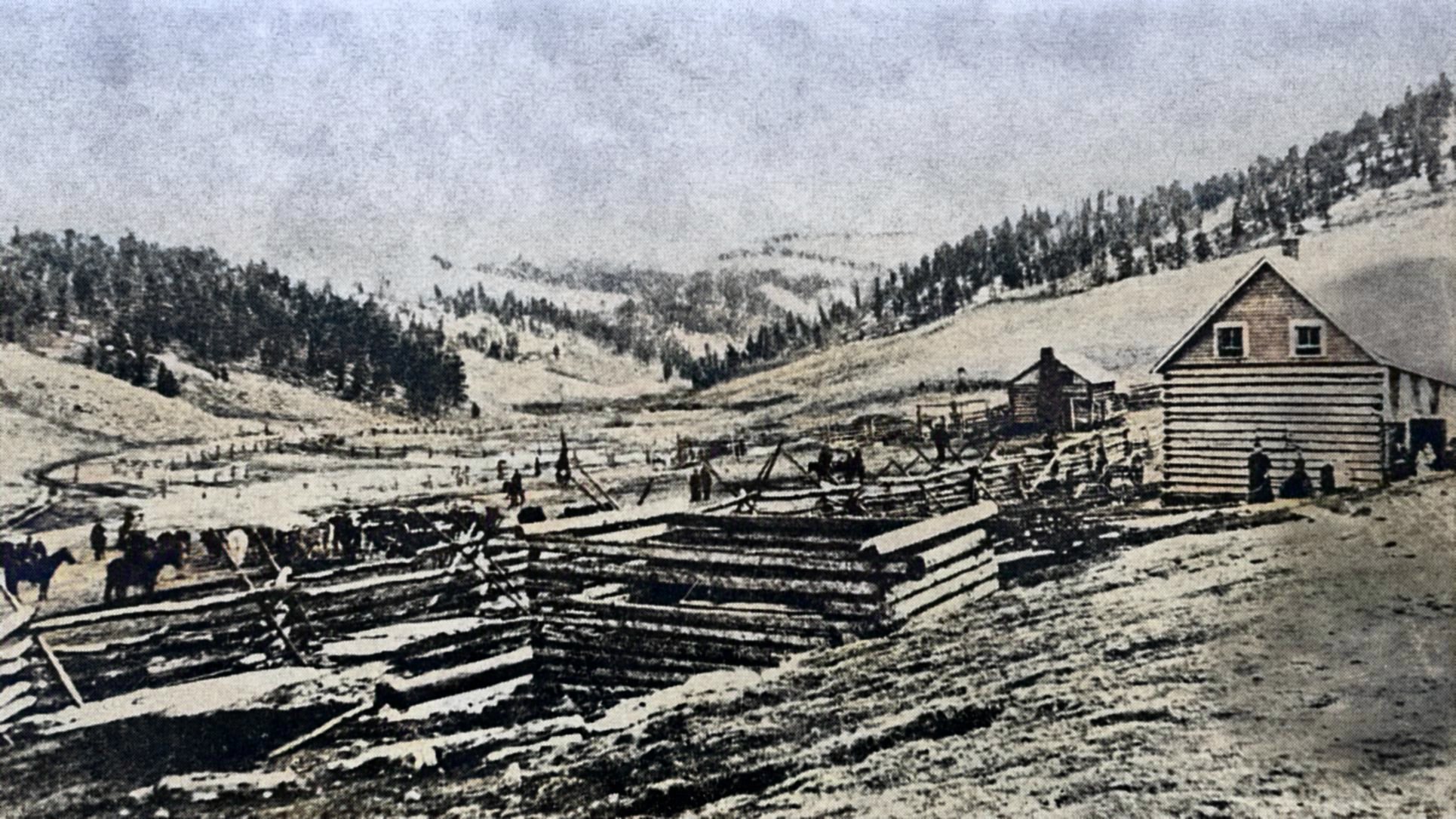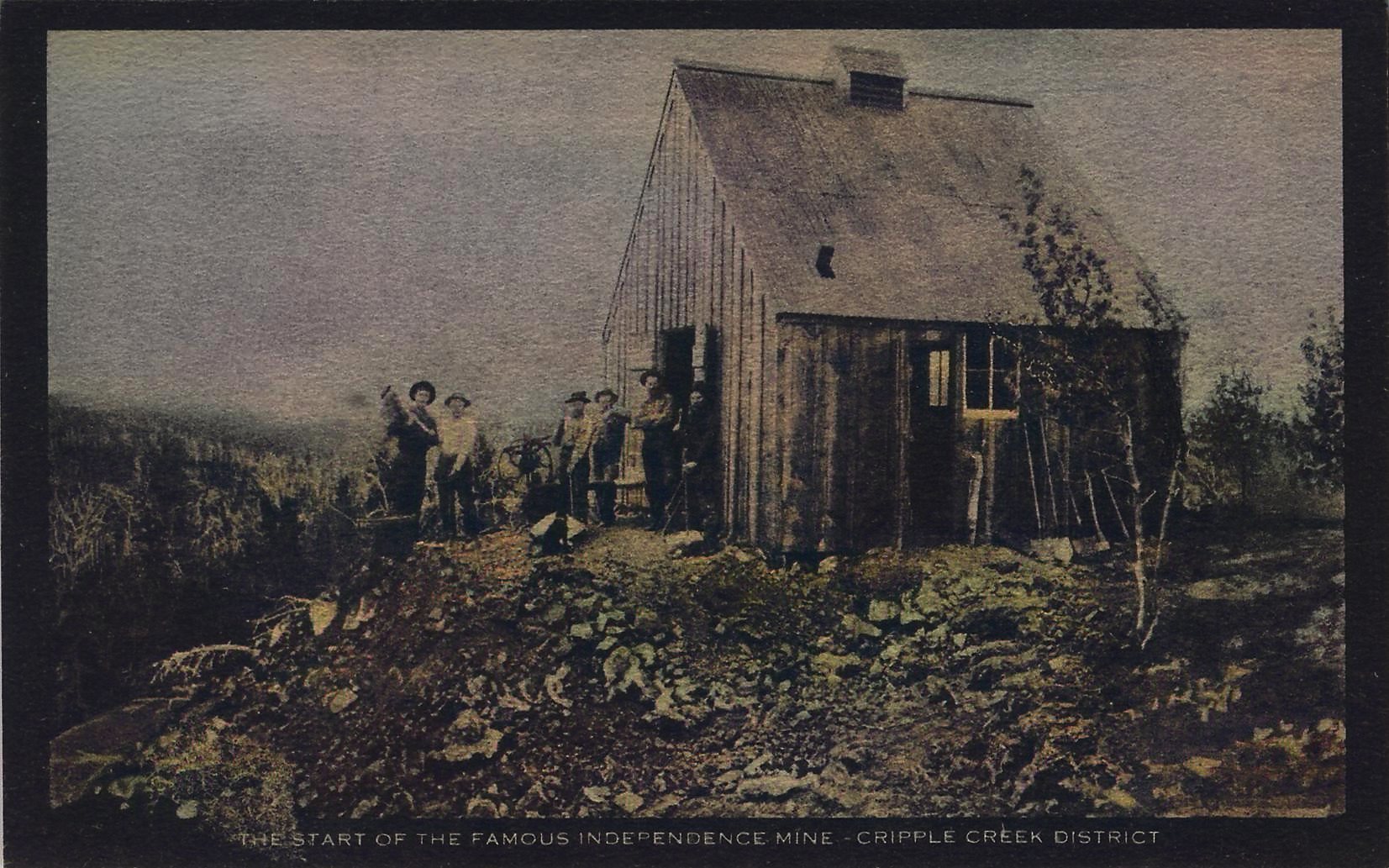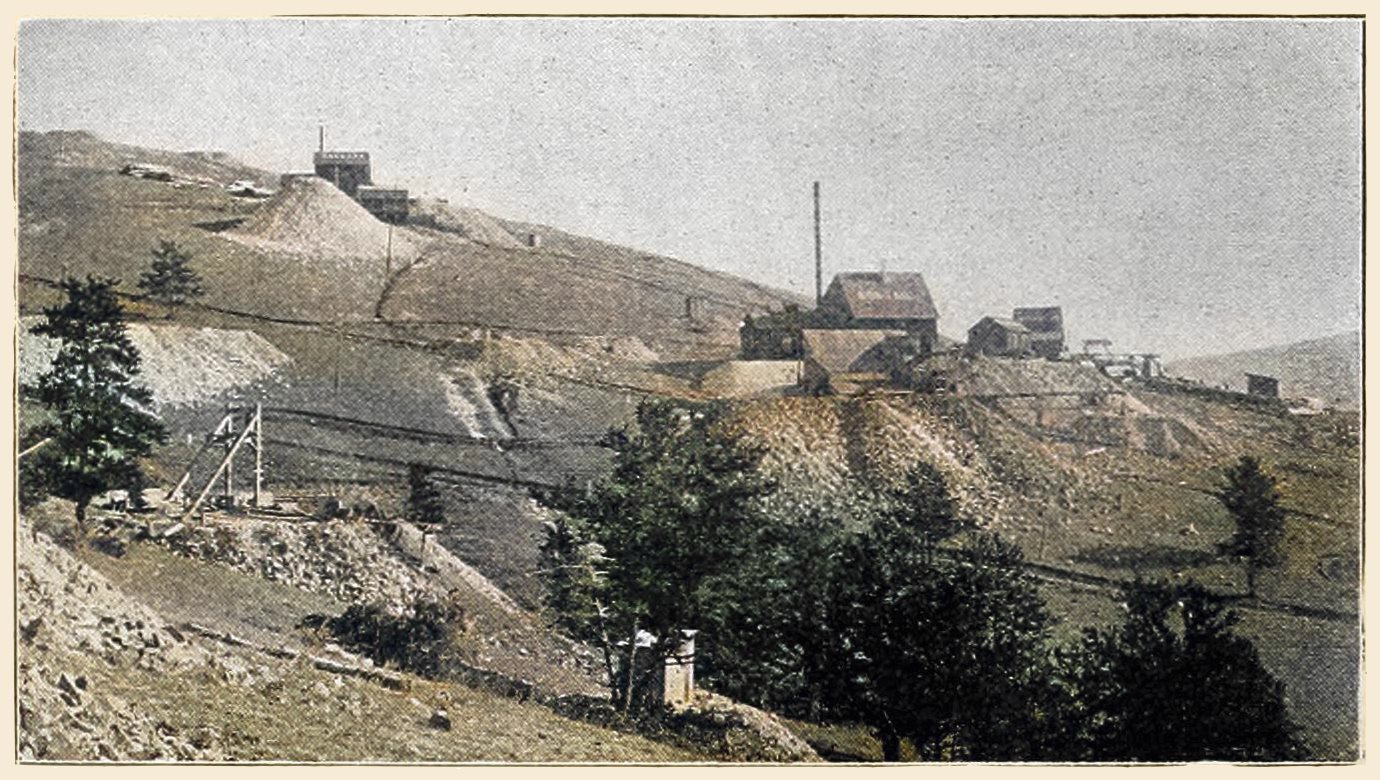-> Found at Hathi Trust Digital Library website, link to first page.
Source had no images, so I reused some images from my collection.
"Bob" Womack, a cowboy, was the first to find ore in Poverty gulch. He took it to Colorado Springs late in 1890, and the float was found to yield $240 to the ton.
Edward de la Vergne, T. F. Frisbie and Dr. J. P. Grannis then put up the Broken Box ranch on Cripple creek, located a claim under the name of El Dorado. This was the first claim registered in the district.
Next M. C. Lackford located the Blue Bell in Squaw gulch, and "Bob" Work, a Denver barber, located the Rose Maud, which showed on one of the earliest assays no less than $2,300 per ton.
In July, 1891, the Buena Vista and the Gold King mines were located. When the Buena Vista was sold to Count Pourtalis and T. C. Parrish, of Colorado Springs, the attention of the entire country was called to the Cripple Creek gold fields, and the rush began.
Over the wind-swept Rocky mountain tops, or waist-deep through the snow in the gulches, the determined body of treasure-seekers poured upon the district and claims were staked in all directions.
From Mineral hill to the creek bed the mountain sides were covered with claims, as was all the ground on both sides of the lines, regardless of the character of the rock.
Many hardships were endured at Cripple Creek in these early days of its popularity, and to such as were successful the life was a rough and distasteful one at best.
One of the wealthiest men at Cripple Creek at the end of 1893 was Winfield S. Stratton, who was accounted to be worth from $15,000,000 to $25,000.000. He had tried his luck in all the camps of the state of Colorado, and was one of the first to enter the Cripple Creek district.
At that time he had no money at all. After prospecting around he made up his mind to pack his traps and go back to his old work as a carpenter, when he discovered the yellow metal on a piece of float picked up on ground owned by "Dick" Houston, the Indian scout, and the "Father of Cripple Creek."
It was the morning of July 4, and Stratton called the claim he located the Independence. He had at that time no great hopes of the claim, but a few weeks later the assayers told him that the rock he had sent them from this location ran $300 or $400 to the ton.
It is reported that one day a man went to Stratton and said: "Will you take $10,000,000 for your mine?"
"Old Man" Stratton, as he was always called, replied: "Do you happen to have a million in your pocket?"
The other said: "No, but I can get it."
Then Stratton added: "Well, if you would give me ten times ten millions and put a million in gold down to bind the bargain, I wouldn't sell. If I had the money I wouldn't know what to do with it. As long as it is down in the mine no one can take it away from me, and I can take it out as fast I please."
On Battle mountain, just above the "Independence," was the second largest prize won by the early explorers of Cripple Creek. This great gold mine is called the Portland.
Early residents tell the story of its beginning as follows:
"'Jimmie' Doyle had a bit of a patch on top of the mountain that might have been big enough for a garden and then again it might not. It was altogether about a sixth of an acre. But it had a vein. Close by 'Jimmie', Burns—it is Mr. James F. Burns now—had another bit of a patch.
They were both Irish and both from Portland, Me., and so they put their claims together, and called their mine 'Portland,' in honor of their native town."
Both were tenderfeet and didn't know just what to do with their property, so one day John Harnan came along and said to them:
"Boys, what'll you give me if I'll find you pay rock?"
Doyle and Burns agreed to give Harnan a third if he found the pay rock. He found it that afternoon, and a year ago Harnan's third of the mine was worth $2,000,000 in the market.
The Portland has produced several millions of dollars' worth of gold.
Stories such as these drove Colorado wild in the early days of Cripple Creek mining, and from 35,000 to 50,000 people flocked to the fields.



